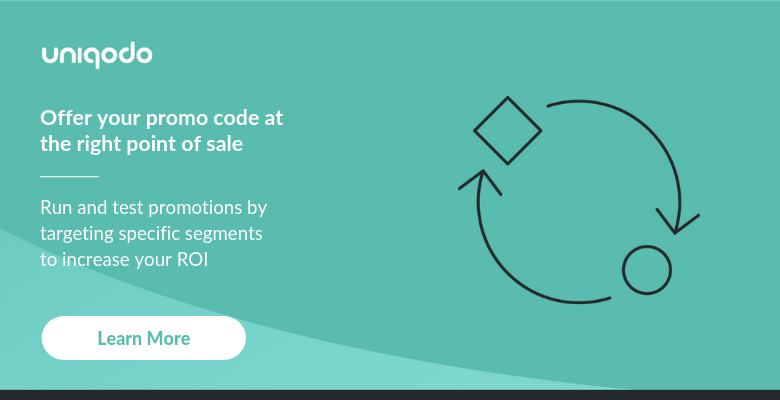We’ve all heard talk about the “death of the high street”. Currently, almost 90% of UK internet users buy online, which is the highest rate in Europe. Unsurprisingly, eCommerce now accounts for about 17% of all retail sales and is growing at ten times the rate of traditional in-store retail. With more and more customers choosing to shop online, the high street’s death often feels inevitable.
However, by using some smart eCommerce strategies, high street retailers can stay alive and well by retaining existing customers and attracting new ones. Online shoppers appreciate eCommerce because of its convenience and personalised customer experience. To stay relevant, traditional high street retailers must consider incorporating the aspects of online shopping that appeal to customers.
Here are some marketing strategies that will help you grow your business and keep the high street relevant in the age of eCommerce. Long live the high street!
1. Offer your customers an omnichannel experience
Today’s customers love brands that work across platforms to provide them with a seamless shopping experience. In the past, a single-channel experience (a storefront) was good enough. In the online era, companies moved toward multichannel commerce. Multichannel meant offering products to customers both online and offline and interacting via social media marketing, web, phone and physical store presence. Today, it’s all about omnichannel. Adopting an omnichannel strategy means using the same channels as in the multichannel approach, but viewing all the channels as having equal importance within your business.
Taking an omnichannel approach means providing a cohesive experience for your customers. To deliver this, you’ve got to ensure that all aspects of your business are interconnected. Omnichannel success requires meaningful communication between departments, as well as shared targets and goals. It’s worth the effort: a study of nearly 50,000 shoppers revealed that omnichannel customers spent more money than single-channel customers.
On a more tangible level, delivering an omnichannel experience means a brand should have a well-designed website and active social media accounts. You should have a content marketing strategy, which includes maintaining a blog where you regularly create content that is relevant and useful for your customers. A brand’s messaging, goals and design should be consistent across all of its channels.
You might also consider how you can use technology to enhance your customers’ in-store experience. For instance, you might offer QR discount codes (more on that in the next section) and equip your floor staff with mobile devices. You should also ensure that your staff’s knowledge of the company’s online experience is as in-depth as their knowledge of the offline store. Attention to detail will help you build that seamless experience for your customers.
2. Use mobile marketing to unite eCommerce and the high-street
A mobile coupon, commonly known as a promo code, is a great way to increase sales and draw potential customers to your store. A promo code is an alphanumeric sequence, QR code or barcode that allows shoppers to unlock savings or other benefits. In 2019, 93% of shoppers were expected to have used a promo code, while 75% of shoppers now expect promotional offerings.
Here are some tips to make the most of your mobile coupon offers:
Make sure to use single-use codes
Using generic promo codes can be useful if your primary goal is to bring new customers to your site. However, for more targeted marketing efforts, single-use codes are a much savvier choice. Single-use codes protect against costly abuse and misuse, ensuring that your codes will not be leaked on coupon-sharing websites. In addition to being more secure, single-use codes enable you to tailor promotions to specific shoppers, allowing for increased ‘digital flexibility’.
Single-use promo code generators are a vital tool for high street brands seeking to compete against digital brands. This type of software runs in the background, generating the code, checking its eligibility and processing the promotion in the customer’s cart. The software’s flexible tools allow you to generate a large number of unique codes in bulk or create one-off codes at a customer’s request.
Many brands are pleased to discover that single-use codes provide the security and flexibility necessary for marketing teams to get creative with their campaigns.
Get creative with advanced messaging
Getting creative with advanced messaging can help ensure that you are maximising the value of your promo codes. Here are a few examples of strategies you might consider.
Personalised promotions
For customers, one benefit of online shopping is a personalised experience. Nearly 80% of shoppers report that they are only likely to engage with discount offerings if they have been customised based on their previous interactions with a brand. Because of this, tracking customer behaviour through data and automation tools is extremely important. Without a grasp on your customer’s behaviour, your promo campaign is highly unlikely to succeed.
Of course, you also need to be wary of over-personalisation. Customers do not want to feel tracked. To err on the side of safety, only tailor your messages based on information that customers have supplied to you directly, such as their contact details and purchase histories.
Gamification
Gamification is a fun and effective way to attract customers. You might choose to use unique promo codes to create vouchers linked to the actions of individual customers. Or you might opt to use gamification as part of your referral strategy. For instance, you could offer your existing customers discounts if they refer their friends. People trust personal recommendations, and gamifying referrals allows you to turn your customer base into part of your marketing team.
The key to any successful gamification campaign is to make the rules as clear as possible. For example: Refer a new customer and get 20% off your next order. Or: Buy one item from each of these five categories and win a £100 voucher. The simpler, the better. Customers won’t want to play a game if the rules don’t make sense.
Scarcity marketing
With promo codes, it’s easy to use scarcity marketing to your advantage. Scarcity marketing draws on the idea that when customers believe they have limited time to make a decision, they are more likely to act quickly.
One scarcity strategy is to customise your unique promo codes to include ‘faders’ that increase their likelihood of immediate use. Faders make excellent pop-up promos on your website to entice indecisive shoppers. They are great for avoiding cart abandonment (the average cart abandonment rate is currently around 75%) and driving immediate conversions.
A similar scarcity strategy is the ‘diminishing discount’. Start at 40% off and reduce that figure by 10% every five minutes until the discount runs out. You can also use the diminishing discount to great effect in email marketing campaigns. Here, the clock should start when the customer opens the email. With this strategy, the urgency begins once you already have the customer’s attention.
Codes that are only redeemable in the store
Customers love brands that offer a seamless shopping experience across platforms. A brilliant way to deliver this integrative experience is to provide customers with a promo code online that they can only use in-store. Bringing customers into your physical store increases the chance of impulse purchase decisions. In-store, face-to-face interactions can also increase customer loyalty. Offer the customer a positive experience, and they’ll want to shop with you again.
Use QR codes in your store
Did you know that nearly 9 out of 10 shoppers make purchases based on in-store discounts? With QR codes, you can create and advertise discounts in your store that customers can redeem with their mobile phones.
Placing QR codes on in-store ads can encourage customers to participate in the advertisement. Because they require scanning, QR codes are inherently more interactive than alphanumeric coupon codes. QR promos can increase conversion rates and help customers find your social media and online presence long after they’ve left your store.
For many customers, QR promotions create a more engaging in-store experience, and this online promotion strategy also delivers many of the flexible capabilities offered by digital promotions.
3. Use the power of data
For high street retailers looking to compete against eCommerce stores, it’s essential to harness the power of data. Analytics technology can help you make sense of vast amounts of data to personalise communications to your shoppers. Learning more about your customers helps target your marketing efforts more effectively and know which products to offer. It also helps you on how to retain customers in ecommerce. Luckily, some software that generates unique promo codes can also as an analytics tool.
Data can also be helpful when it comes to personalising your brick-and-mortar stores. Your online sales data might show location-specific spikes in demand for particular products or brands. Having access to this information would help you ensure that these products remain in-stock in shops in those areas. In short, data can help you sell the products that your customers want to buy.
Business intelligence software can also help you gather the data and perform the analysis necessary to:
-
Optimise your brand
-
Identify underperforming stores
-
Predict product and customer trends
-
Deliver on KPIs
Big data can help even a small business stay relevant in the age of eCommerce business.
4. Consider the reach of distributed commerce
The internet is a big place, and you are not limited to offering your goods on product pages within your own online store. Using distributed commerce can help you increase the reach of your products, get your items seen by more customers and drive more sales.
As you already know, online consumers are shopping across more channels than ever before. Distributed commerce acknowledges this and aims to make products available to customers no matter where they are shopping online. Retailers can place their product feeds into marketplaces and price comparison sites like Google Shopping and Amazon.
This style of digital marketing can prove particularly profitable for high street brands. Think about it like this: When people walk down the high street, they aren’t necessarily looking for a specific product. They may not want to buy anything at all. However, when a customer searches for a product using a price comparison tool, they are doing so with the intent to make a purchase. Using distributed commerce helps your products get seen by customers who want to buy them.
5. Continue to take care of the basics
Maybe you draw customers into your store using promo codes or creative marketing strategies. Perhaps you allow online shoppers to return, exchange, or collect items in your store and offer incentives or free products if they do so. But all of this is only going to be effective in the long-term if you continue to look after the basics.
For your retail stores, this means optimising the layout for customers and ensuring that your staff are properly trained and supported. You must also make sure you’re staying true to your brand and what customers value about you across all of your channels. When you take care of the basics, your digital and technological strategies are far more likely to lead to lasting success and customer loyalty.
A thriving high street
Although online shopping is on the rise, this doesn’t have to mean the death of the high street or traditional shopping. In fact, high-street retailers can thrive in this new environment, provided they are willing to adapt.
Adapting means integrating online and offline platforms and focusing on data to offer a cohesive experience to customers. A positive, personalised experience for customers is vital for a healthy, robust, and profitable high street.




Subscribe to the Blog